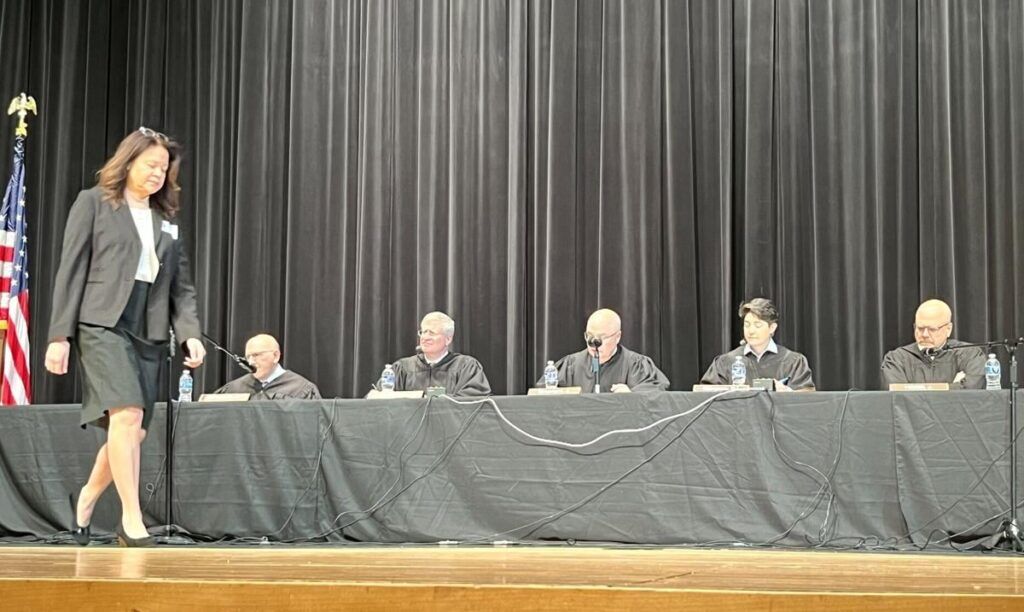Report finds school zones contribute to education inequities in Colorado
A Colorado report has found that the way public school officials draw their “attendance zones” contribute to educational inequities.
Conducted by the Colorado Advisory Committee to the U.S. Commission on Civil Rights, the report is based on a series of web and in-person hearings in 2023, as well as written statements and relevant research.
“Attendance zones contribute to educational inequities by reinforcing geographic disparities in access to high-quality schools,” the report concluded. “Witnesses testified that families in high-income areas are significantly more likely to have access to top schools compared to families in low-income areas.”
The report highlighted research conducted from various organizations, including Ready Colorado, an education group that advocates for school choice; Century Foundation; and A+ Colorado, an “action tank” that, according to the nonprofit, uses data to advocate for policies that accelerates learning for all students.
For example, the report cited a 2020 Ready Colorado study that found just 6% of those living in low-income areas have access to quality elementary schools compared to 24% for those in high-income areas. The disparities widen at the middle and high school level, with a majority of low-and middle-income communities lacking meaningful access to quality schools.
Among the key findings:
• “Attendance zones” affect how people view which schools are “good” or “bad” — and that these perceptions are frequently associated with race
• Not every Colorado student has the same opportunity to get a good education, in part because of how school boundaries are drawn
The report highlighted Denver Public Schools’ (DPS) efforts to allow students to have more choices where to go to school within a zone. But in some areas — such as Park Hill, Stedman and Smith elementary schools — not all campuses are included in these zones.
The South Park Hill area is, generally, a middle- to upper-middle-class, predominantly White neighborhood, while Stedman and Smith are in historically more diverse Black and Latino neighborhoods.
The report said district officials have attempted to make Stedman Elementary, which has a mix of students, more diverse by recruiting students and offering dual-language programs. However, school boundaries continue to reflect old patterns of racial and economic separation, the report said.
School boundaries is not a new issue for DPS.
In 1973, the U.S. Supreme Court issued a landmark ruling, called the Keyes decision, that found — for the first time — de facto racial segregation in DPS. The court concluded district officials had intentionally drawn school boundaries and made decisions about school locations, staffing and feeder patterns that separated Black and Latino students from Whites students.
As a result, the court ordered a desegregation effort in Denver that included busing and redrawing attendance zones to integrate the district’s schools.
The court-ordered busing successfully integrated DPS schools — at least for a time. When the courts declared the district had achieved “unitary status” in 1995, the busing order was lifted and schools began almost immediately to “re-segregate.”
More than 50 years later, the Colorado Advisory Committee’s report said these patterns persist with schools like Park Hill, Stedman, and Smith Elementary continuing to reflect racial and economic divides that limit access to quality education for students of color and low-income students.
Scott Pribble, a district spokesperson, was unable to provide a response to the 105-page report released Monday.
After shuttering 10 schools over the past two years without a boundary study, board members are weighing a rule that would require Superintendent Alex Marrero to review school boundaries and enrollment zones at least once every 10 years, alongside new U.S. Census data.
Brian Eschbacher, a former DPS administrator and an education consultant, testified before the committee that most students in Denver attend “identifiably high- or low-income schools.”
Schools in the metro Denver area are said to be among the nation’s top 10 most income-segregated.
“School segregation is not simply a problem facing the Denver metro area; it extends beyond Denver into suburban and rural districts as well,” the report said.
For example, state education data also shows that schools where students of color comprise most of the population tend to have fewer teachers rated effective in evaluations, the report noted.
Take Denver where nearly 90% of teachers in schools with primarily White students received a rating of “effective” or higher, while 63% of those in high-minority schools received this distinction, a roughly 30-point gap. The same pattern exists in Douglas County, where 82% of teachers in predominantly White schools earned an “effective” or higher rating compared to 42% of teachers in “high-minority” schools.
“Access to quality education and school choice are fundamental rights that should be protected and made available to all individuals regardless of race,” Alvina Earnhart, commission chair, said in a statement.
The report made 15 recommendations to for stakeholders that included the Colorado General Assembly, Colorado Department of Education and the state’s school districts.











